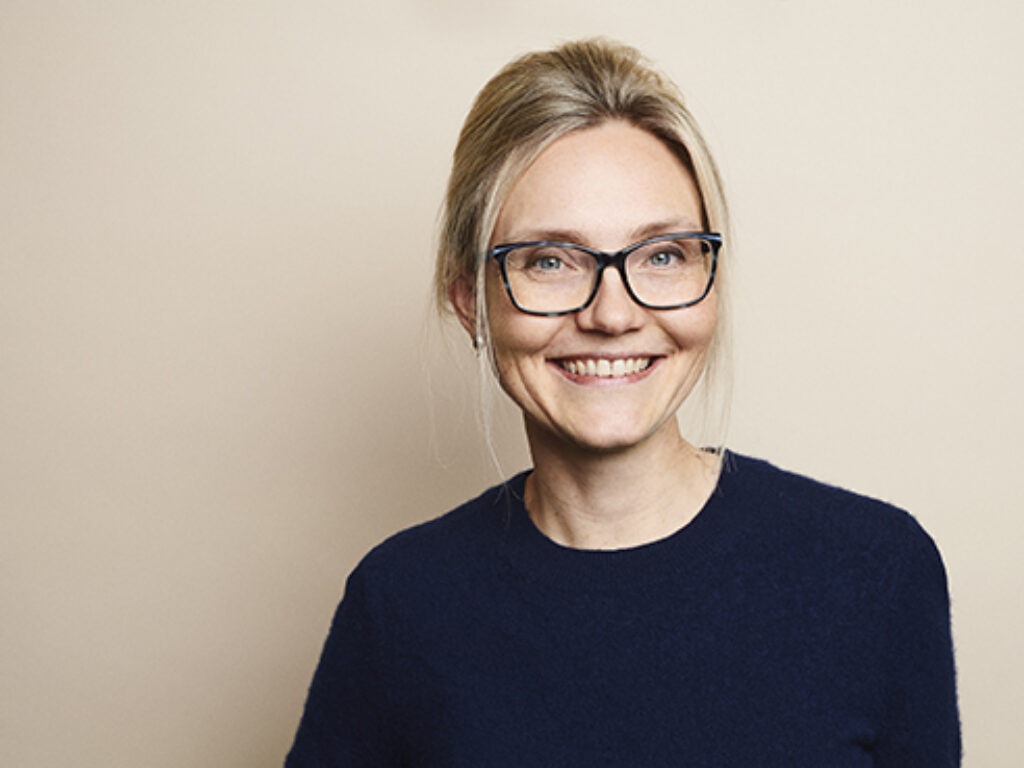Marie Louise Wissing
Ich bin ausgebildete Ärztin der Universität Kopenhagen. Nach meiner klinischen Grundausbildung habe ich an der Fertilitätsklinik der Region Seeland zu forschen begonnen und habe 2013 den PhD-Grad mit einer Abhandlung über das Polyzystische Ovar-Syndrom (PCOS) und die Eizellenqualität erreicht. Ich wurde 2018 Fachärztin für Gynäkologie und Geburtshilfe und habe mich seitdem ausschließlich mit der Fertilitätsbehandlung beschäftigt.
Ich bin Fertilitätsfachärztin mit starkem Fokus darauf, dem jeweiligen Patienten eine optimale und individuelle Behandlung zukommen zu lassen. Dank meiner Forschungserfahrung verfüge ich über besonderes Fachwissen im Bereich PCOS.
Ich habe mich für die Arbeit bei Aleris Fertility entschieden, weil ich gern Teil eines Teams sein möchte, das eine einzigartige und führende Fertilitätsklinik in Skandinavien schafft. Aleris Fertility bietet als Teil der Aleris Privatkliniken die besten Voraussetzungen, um eine optimale Behandlung anzubieten und zur laufenden Entwicklung und Verbesserung im Fertilitätsbereich mitzuwirken.
Ausbildung
- 2006: Medizinisches Staatsexamen
- 2013: PhD
- 2018: Fachärztin für Gynäkologie und Geburtshilfe
Erfahrung
- 2018 – 2020: Fertilitätsklinik der Region Seeland, Universitätsklinikum Seeland Køge
- 2013 – 2018: Herlev Universitätsklinikum & Holbæk Krankenhaus (Facharztausbildung in Gynäkologie und Geburtshilfe)
- 2009 – 2013: Fertilitätsklinik der Region Seeland (PhD)
- 2008 – 2009: Medizinische Grundausbildung
Berufliche Mitgliedschaften
- Dänische Gesellschaft für Geburtshilfe und Gynäkologie (DSOG)
- Dänische Fertilitätsgesellschaft (DFS)
- European Society for Human Reproduction (ESHRE)
Andere relevante Informationen
Mitverfasserin verschiedener medizinischer Leitfäden in der Dänischen Fertilitätsgesellschaft
Publikationen
- Sørensen AE, Udesen PB, Maciag G, Geiger J, Saliani N, Januszewski AS, Jiang G, Ma RC, Hardikar AA, Wissing MLM, ALM Englund, LT Dalgaard . Hyperandrogenism and Metabolic Syndrome Are Associated With Changes in Serum-Derived microRNAs in Women With Polycystic Ovary Syndrome. Front Med [Internet] 2019 [cited 2020 Jan 4];6. Available from: https://www.frontiersin.org/article/10.3389/fmed.2019.00242/full
- Wissing ML, Mikkelsen AL, Kumar A, Kalra B, Pors SE, Flachs EM, Andersen CY. Associations of different molecular forms of antimüllerian hormone and biomarkers of polycystic ovary syndrome and normal women. Fertil Steril. 2019 Jul;112(1):149-155.
- Poulsen LC, Englund ALM, Wissing MLM, Yding Andersen C, Borup R, Grøndahl ML. Human granulosa cells function as innate immune cells executing an inflammatory reaction during ovulation: a microarray analysis. Mol Cell Endocrinol. 2019 Apr 15;486:34-46.
- Udesen PB, Sørensen AE, Joglekar MV, Hardikar AA, Wissing MLM, Englund AM, Dalgaard LT. Levels of circulating insulin cell-free DNA in women with polycystic ovary syndrome – a longitudinal cohort study. Reprod Biol Endocrinol. 2019 Apr 5;17(1):34.
- Jepsen MR, Kløverpris S, Bøtkjær JA, Wissing ML, Andersen CY, Oxvig C. The proteolytic activity of pregnancy-associated plasma protein-A is potentially regulated by stanniocalcin-1 and -2 during human ovarian follicle development. Hum Reprod. 2016 Apr;31(4):866-74.
- Sørensen AE, Wissing ML, Englund AL, Dalgaard LT. MicroRNA Species in Follicular Fluid Associating With Polycystic Ovary Syndrome and Related Intermediary Phenotypes. J Clin Endocrinol Metab. 2016 Apr;101(4):1579-89.
- Sørensen AE, Udesen PB, Wissing ML, Englund ALM, Dalgaard LT. MicroRNAs related to androgen metabolism and polycystic ovary syndrome. Chem Biol Interact. 2016 Nov 25;259(Pt A):8-16.
- Bøtkjær JA, Jeppesen JV, Wissing ML, Kløverpris S, Oxvig C, Mason JI, Borgbo T, Andersen CY. Pregnancy-associated plasma protein A in human ovarian follicles and its association with intrafollicular hormone levels. Fertil Steril. 2015 Nov;104(5):1294-301.
- Aziz M, Sidelmann JJ, Faber J, Wissing ML, Naver KV, Mikkelsen AL, Nilas L, Skouby SO. Polycystic ovary syndrome: cardiovascular risk factors according to specific phenotypes. Acta Obstet Gynecol Scand. 2015 Oct;94(10):1082-9.
- Petersen TS, Kristensen SG, Jeppesen JV, Grøndahl ML, Wissing ML, Macklon KT, Andersen CY. Distribution and function of 3′,5′-Cyclic-AMP phosphodiesterases in the human ovary. Mol Cell Endocrinol. 2015 Mar 5;403:10-20.
- Aziz M, Sidelmann JJ, Wissing ML, Faber J, Skouby SO. Endogenous thrombin potential in polycystic ovary syndrome: the association to body mass index, insulin resistance, and inflammation. Gynecol Endocrinol. 2015;31(9):720-4.
- Sørensen AE, Wissing ML, Salö S, Englund AL, Dalgaard LT. MicroRNAs Related to Polycystic Ovary Syndrome (PCOS). Genes (Basel). 2014 Aug 25;5(3):684-708
- Wissing ML, Sonne SB, Westergaard D, Nguyen Kd, Belling K, Høst T, Mikkelsen The transcriptome of corona radiata cells from individual MІІ oocytes that after ICSI developed to embryos selected for transfer: PCOS women compared to healthy women. J Ovarian Res. 2014 Nov 29;7:110.
- Wissing ML, Kristensen SG, Andersen CY, Mikkelsen AL, Høst T, Borup R, Grøndahl ML. Identification of new ovulation-related genes in humans by comparing the transcriptome of granulosa cells before and after ovulation triggering in the same controlled ovarian stimulation cycle. Hum Reprod. 2014 May;29(5):997-1010.
- Aziz M, Wissing ML, Naver KV, Faber J, Skouby SO. Polycystic ovary syndrome and low-grade inflammation with special reference to YKL-40. Gynecol Endocrinol. 2014 Apr;30(4):311-5.
- Wissing ML, Bjerge MR, Olesen AI, Hoest T, Mikkelsen AL. Impact of PCOS on early embryo cleavage kinetics. Reprod Biomed Online. 2014 Apr;28(4):508-14.
- Aziz M, Naver KV, Wissing ML, Mikkelsen AL, Nilas L, Skouby SO. Polycystic ovary syndrome: infertility, cardiovascular, metabolic and obstetrical risks, laboratory and clinical outcomes – the PICOLO Study. Gynecol Endocrinol. 2012 Apr;28(4):253-8.
